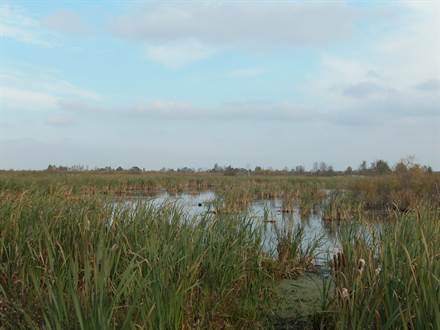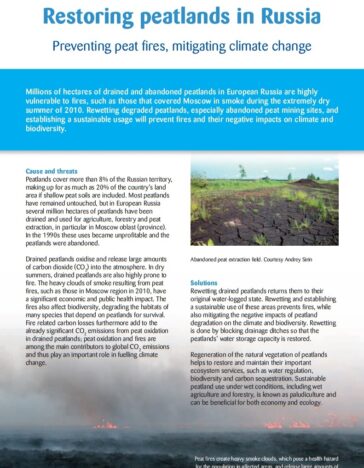
Peat restoration – the key solution for large peat-fires in Russia
-
Peatland conservation and restoration
Thanks to an active and laborious fire-fighting operation the recent peat and forest fires in Tver Province were localised and the region was saved from events becoming as dramatic as in 2010 when dense smoke haze covered the city of Moscow for weeks. Still, the region’s economy and ecology again suffered severely from the fires, as well as the climate.
Wetlands International argues that restoration of degraded and abandoned peatlands, is one of the key solutions to avoid often reoccurring dry weather related fire events, and to reduce the release of huge amounts of peat-related carbon emissions.
Localisation of fires
The prolonged hot weather has caused rapidly spreading peat and forest fires sweeping through the Tver Province, just about 150 km north-west of the Moscow city. Thanks to concerted efforts by provincial and federal authorities, no lives and houses were lost and the haze situation got less out of hand than in the summer of 2010 when thick smoke from similar peat fires caused tremendous air pollution, with major health risks for residents and enormous CO2 emissions as a consequence.
Smog mainly caused by burning peatlands
Even though some negligence of people (by throwing cigarette butts or leaving campfires unattended) and a protracted drier period can be blamed as proximate causes as mentioned in news reports, the ultimate cause of such large-scale infernos have their roots in altered ecosystems.
Many natural peatlands like those on fire in the Tver region were drained in the past to be used for peat extraction, agriculture and forestry. In the 1990s, activities on peatlands became unprofitable and many were fully abandoned. In dry summers like this year, these peatlands are highly prone to fire.
Peat fires, which occur in several regions of Russia under dry weather conditions, are very difficult to extinguish and may continue to burn underground for months, even after rainfall and under snow cover.
Peatland conservation and restoration as the key solution
The only long-term solution to avoid fire damage is to maintain or restore the damaged peatlands into natural water-saturated state or to establish a sustainable use of these areas. This prevents not only large fire events, but also mitigates climate change by reduction of greenhouse gas emissions and enhances biodiversity. It can also give an economic boost to the region, raise an appeal of the territories for tourism, recreation, and summer houses. Paludiculture (land management techniques that cultivate biomass from wet and rewetted peatlands), can lead to job creation in rural regions by commercially harvesting reed, berries and bioenergy crops.

Large scale peatland restoration started since 2010
Within the framework of Russian-German state cooperation, some large scale peatland rewetting projects have already started since the dramatic fires in 2010. Wetlands International, Michael Succow Foundation, Greifswald University and the Institute of Forest Science of the Russian Academy of Sciences provide technical assistance in the rewetting and rehabilitation of over 40.000 hectares of degraded peatlands implemented by Moscow Province Administration, and about 5.000 hectares in the Tver Province as part of the multi-year project “Restoring peatlands in Russia – for fire prevention and climate change mitigation”.
The project is part of the International Climate Initiative (ICI) financed by the German Federal Ministry for the Environment, Nature Conservation, Building and Nuclear Safety (BMUB) and facilitated through KfW Entwicklungsbank.
Lessons learned in the pilot sites and developed guidelines for peatland rehabilitation aim to contribute to effective peatland restoration minimizing such tragic events as fires witnessed in the Tver Province now.

